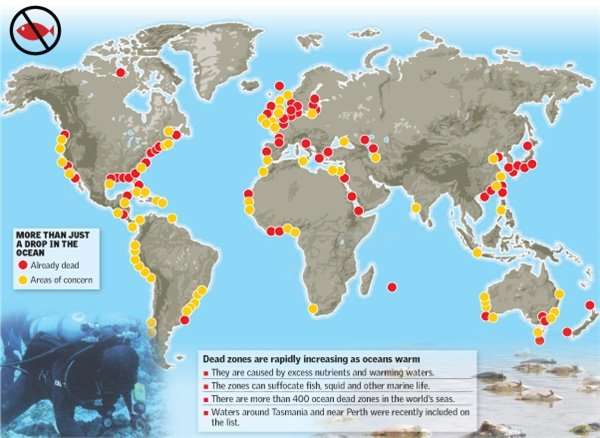In oceania, no one can hear you seep.
The U.S. Coast Guard “discovered” 4 days after an explosion destroyed and sank the Deepwater Horizon drilling rig 40 miles off the coast of Venice, Louisiana, killing 11 crew workers, that indeed, oil does appear to be leaking out of the well head on the floor of the ocean.
From HuffPo this morning:
http://www.huffingtonpost.com/…
“We thought what we were dealing with as of yesterday was a surface residual (oil) from the mobile offshore drilling unit,” (Rear Admiral Mary) Landry said. “In addition to that is oil emanating from the well. It is a big change from yesterday … This is a very serious spill, absolutely.”
Coast Guard and company officials estimate that as much as 1,000 barrels – or 42,000 gallons – of oil is leaking each day after studying information from remotely operated vehicles (underwater) and the size of the oil slick surrounding the blast site. The rainbow-colored sheen of oil stretched 20 miles by 20 miles on Saturday – about 25 times larger than it appeared to be a day earlier, Landry said.
BP PLC, which leased the rig and is taking the lead in the cleanup, and the government have been using the remotely operated vehicles to try to stop the leak by closing valves on the well deep underwater. If that doesn’t work, the company could drill what’s called an intervention well to control the oil flow. But the intervention drilling could take months.
The article says that the 1989 Exxon Valdez tanker wreck in Alaska was 11 million gallons. By dividing 11 million by 42,000 gallons, assuming the government is not lowballing this estimated amount, which seems like a nice, suspiciously round number, “1000 barrels,” I’m coming up with 261 days before this is as big as the Exxon Valdez spill. The regional director for the Federal government’s Mineral Management Services (the wonderful folk who let the companies bid on offshore drilling tracts) says that leaks have been repaired at this depth before, but it is difficult. Bad weather is currently delaying the cleanup of already spilt oil.


